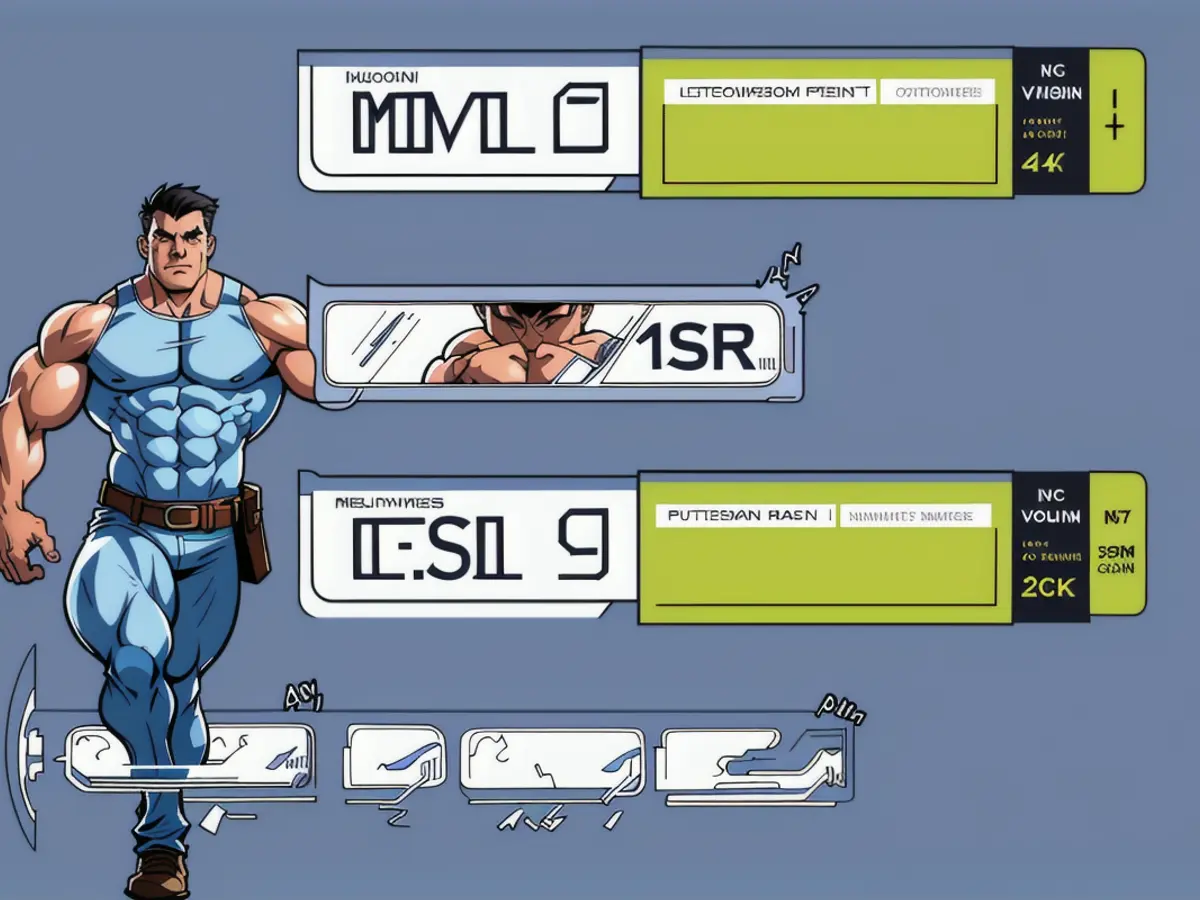Lowering prolonged medication expenses with Omnitrope: Strategies for minimizing long-term drug costs.
Lowdown on Omnitrope's Cost
Are you curious about Omnitrope's price tag? Let's break it down for you.
The price you'll pay for Omnitrope, a growth hormone medication, varies based on a multitude of factors. Here's what you need to consider:
- Your treatment plan
- Your insurance coverage (or lack thereof)
- The pharmacy you choose
- The form of Omnitrope (either a prefilled cartridge or a powder vial)
- Equipment needed, such as the Omnitrope pen delivery system
- Whether Omnitrope offers a savings program (more on that below)
Omnitrope is available as a subcutaneous injection in two forms: a prefilled cartridge you inject with an auto-injector pen, or a powder in a vial that you mix with a liquid and inject with a syringe. You may need to purchase this medication from a specialty pharmacy authorized to carry specialty drugs.
To find out the exact cost of Omnitrope for you, have a chat with your doctor, pharmacist, or insurance provider. But why do biologic drugs like Omnitrope cost more than their biosimilar counterparts? Let's dive deeper into the factors that influence their cost.
Why are Biologic Drugs Costly?
Biologic drugs, such as Omnitrope, have higher development costs compared to biosimilars and traditional small-molecule medications. Here's why:
- Complex Manufacturing Process: Biologic drugs originate from living organisms, making their production more complex and expensive than other medications. This complexity adds costs for quality control, batch consistency checks, and larger or longer clinical trials.
- Patent Protection: Biologic drug manufacturers enjoy an initial period of market exclusivity through patents. This exclusivity results in higher prices to recoup development costs.
- Discounts and Price Negotiations: Even with market exclusivity, biologic drug makers often offer discounts and price negotiations to healthcare providers, pharmacy benefit managers, and insurance companies.
Biosimilars enter the market after the patent expires. They benefit from not having to conduct the same level of research and development as the original biologic drugs, but they still require a substantial investment due to clinical trials and regulatory approval processes.
Tips to Lower Long-Term Drug Costs
If you use Omnitrope long term, there are ways to lower its cost:
- 90-Day Supply: Your insurance company may approve a 90-day supply of Omnitrope. Talk to your doctor, pharmacist, or insurance provider to explore this option.
- Mail-Order Pharmacy: Omnitrope may be available through a mail-order specialty pharmacy, which could help lower costs and enable you to receive your medication from the comfort of your home. Some Medicare plans may help cover mail-order medications, and you may also secure a 90-day supply.
- Financial Assistance Programs: If you're finding it difficult to pay for Omnitrope or need help understanding your insurance coverage, consider utilizing financial assistance programs. Check out the OmniSource program for Omnitrope or visit websites such as the Medicine Assistance Tool and NeedyMeds for further resources.
FAQs about Omnitrope Cost
Does the manufacturer offer an Omnitrope coupon program?
No, but the manufacturer does have other savings programs, including the Co-pay Savings Program and Self Pay Program. These programs can significantly reduce your Omnitrope cost per month. For example, you may even be able to get Omnitrope for free if you're eligible for the Co-pay Savings Program.
How does the cost of the Omnitrope 5.8-mg vial compare to Omnitrope pens?
In general, Omnitrope vials tend to cost less than Omnitrope pen cartridges, making them the more cost-effective option for Omnitrope treatment. However, your cost depends on several factors, including your dosage, insurance coverage, specific plan benefits, and any prior authorization requirements for drug coverage.
- The cost of Omnitrope, a growth hormone medication used in pediatrics for growth disorders, can vary due to factors such as treatment plans, insurance coverage, pharmacy choice, form of Omnitrope, needed equipment, and potential savings programs.
- Biologic drugs like Omnitrope often have higher costs compared to biosimilars and traditional small-molecule medications because of complex manufacturing processes, patent protection, and additional expenses like quality control, batch consistency checks, and clinical trials.
- To lower long-term Omnitrope costs, consider opting for a 90-day supply, using a mail-order pharmacy, or utilizing financial assistance programs like the OmniSource program for Omnitrope, the Medicine Assistance Tool, or NeedyMeds.
- Factually, the manufacturer does not offer an Omnitrope coupon program but provides savings programs such as the Co-pay Savings Program and Self Pay Program.
- Compared to Omnitrope pens, the cost of Omnitrope 5.8-mg vials is generally lower, making them a more cost-effective choice for treatment, but exact costs depend on various factors.








